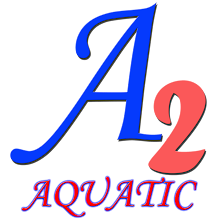The path of lifesaving beckons when you want to further the learning in swimming. Afterall, learning how to swim can be categorised under protecting yourself in my opinion. Lifesaving is learning how to save others' lives.
One might think that brawn wins all in lifesaving. No doubt that you need strength in lifesaving. Imagine, a victim is in the water struggling and he weights approximately 80kg. (No pun intended) A person's weight decreases dramatically in the water, but what happens if he needs to be pulled ashore to safety? Strength plays a part too. It also plays a part in administering Cardio-Pulmonary Resuscitation (CPR) too! Strength is needed to compress the chest to a certain depth in a bid to pump the heart thereby allowing blood to circulate throughout the body.
However, brawn does not win the war alone! A thinking lifesaver coupled with a strong lifesaver will win outright. Why do I say this is because a thinking lifesaver thinks of the best possible way to save a victim while a strong lifesaver makes things easier by doing the tough part. (Think of the 80kg victim in the water)
Therefore, my main motive in promoting lifesaving is to inculcate a lifesaver who thinks and has the strength to complete the rescue. Despite this, I firmly believe that no lifesaver is alone. With another (or more) lifesaver(s) together, a successful rescue can be initiated. Teamwork says it all!
The path of lifesaving begins with the basics. Lifesaving 1 2 3 are the basis from which is to prepare students en route to Bronze Medallion. Land-based; water-based rescues and resuscitation are taught in Lifesaving 1 2 3 while Bronze Medallion (BM) incorporates them with the added touches of speed, stamina and endurance.
To be able to be employed as a Lifeguard in Singapore, he/she must possess BM and CPR as well as past the minimum age of working in Singapore.
The path of Lifesaving does not end with BM and CPR. From it, the path branches out into two ways. Open Water Lifesaving and Still Water Lifesaving.
Open Water Lifesaving comprises of Bronze Cross and Silver Cross. They are various lifesaving rescue techniques that are performed at seaside. Examples are using canoes; surfboards; fins; torpedo buoy as rescue aids. Theoretical part will include how to handle aquatic emergencies faced at seaside, like being stung by a jelly fish; underwater searching in seaside conditon etc.
Still Water Lifesaving is a continuation of BM and CPR. Students will be able to challenge themselves in the practical aspects. Regarding the practical aspects, they are no doubt almost the same as BM but the distance between the victim and rescuer are increased. They are Award of Merit and Distinction. As for theoretical aspects, students will cover more questions than in BM. This is to better prepare them as a smarter lifesaver which sets them apart from students who completed BM only.
Saturday, 8 December 2007
Subscribe to:
Comments (Atom)


